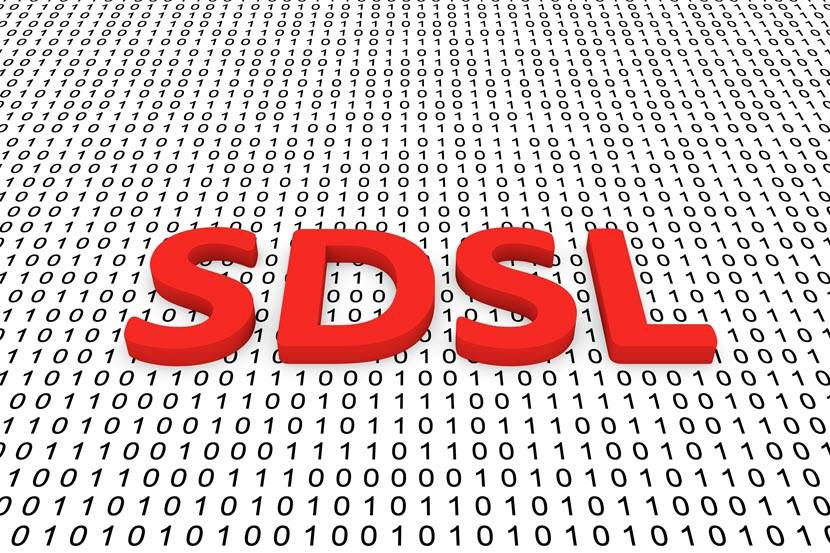Symmetric digital subscriber line (SDSL) is a digital communication technology developed in the late 1990s to address the growing demand for high-speed, symmetrical data transfer in business environments. Unlike traditional DSL technologies that focus on higher download speeds at the expense of upload speeds, SDSL offers a balanced approach, providing equal bandwidth for both upstream and downstream data. This symmetry makes it particularly suitable for businesses and professional applications that require consistent data transmission in both directions.

What Is SDSL?
SDSL, or symmetric digital subscriber line, is a type of DSL technology that delivers identical upload and download speeds over the same physical medium—copper telephone lines. Introduced as a solution for small and medium-sized businesses, SDSL was designed to meet the needs of environments where upload performance is as critical as download performance.
Traditional DSL technologies, such as asymmetric digital subscriber line (ADSL), are geared toward consumer markets where the demand for high download speeds (e.g., streaming video, browsing) outweighs the need for high upload speeds. SDSL, however, serves a different market segment. It caters to scenarios where large amounts of data need to be sent and received, such as file sharing, video conferencing, online collaboration, and hosting services.
SDSL operates within the baseband frequency spectrum of the copper telephone line, avoiding the need for multiplexing with voice signals in some cases. The service typically ranges from 192 Kbps to 2.3 Mbps for both upload and download speeds. The symmetrical nature of SDSL provides a consistent and reliable connection, which is crucial for business-critical applications where data integrity and transfer speed directly impact operations.
How Does SDSL Work?
SDSL modulates digital signals to be transmitted over standard copper telephone wires, similar to other DSL technologies. However, unlike ADSL, which splits the available bandwidth unevenly between upstream and downstream data, SDSL allocates equal portions of the bandwidth for both directions. This split is achieved through specific modulation schemes such as quadrature amplitude modulation (QAM) or discrete multi-tone (DMT).
Modulation Techniques and Data Transmission
In SDSL, the entire frequency spectrum available on the copper line is used exclusively for data transmission without sharing it with voice services. The modulation technique, typically QAM or DMT, allows for efficient use of the available bandwidth by encoding data as a combination of amplitude and phase changes in the signal. This complex encoding enables the transmission of multiple bits per cycle, effectively increasing the data rate without requiring additional physical infrastructure.
SDSL modems at both the customer premises and the central office are crucial to the technology's operation. These modems convert digital data into electrical signals that travel across the copper lines. Upon reaching the receiving modem, the signals are demodulated back into digital data. The symmetrical bandwidth is maintained because the modems are configured to operate identically in both directions, ensuring equal upload and download speeds.
Distance Limitations and Signal Attenuation
A significant factor in the performance of SDSL is the distance between the customer premises and the telephone company's central office or DSLAM (digital subscriber line access multiplexer). As with all DSL technologies, the signal quality degrades over distance due to attenuation, which is the loss of signal strength as it travels through the copper wire. This degradation is more pronounced in SDSL because the same bandwidth is used for both upstream and downstream transmissions, making the technology more sensitive to distance-related losses.
The effective range of SDSL is typically within 3 kilometers (about 2 miles) of the central office. Beyond this range, the achievable data rate decreases significantly, limiting the practicality of SDSL for users located farther away. This distance limitation is critical when deploying SDSL in areas where the central office is not nearby.

SDSL Advantages and Disadvantages
While SDSL provides a range of benefits tailored to specific business needs, it also presents certain challenges that must be considered before implementation.
Advantages
Here are the benefits of SDSL:
- Symmetrical bandwidth. One of the key advantages of SDSL is its provision of symmetrical bandwidth, which ensures that both upload and download speeds are identical. This feature is particularly beneficial for businesses that require substantial data transfer in both directions, such as video conferencing, remote desktop access, and server hosting. The symmetrical nature of SDSL supports applications where uploading data is equally important as downloading it.
- Dedicated and consistent bandwidth. SDSL is often deployed on a dedicated line, meaning the connection is not shared with other users, unlike many broadband technologies. This exclusivity results in more consistent and predictable performance, as the bandwidth is not subject to fluctuations caused by network congestion. For businesses, this reliability is crucial, especially for time-sensitive operations.
- Compatibility with existing infrastructure. SDSL can be implemented over existing copper telephone lines, making it a cost-effective solution for businesses that do not have access to newer fiber-optic infrastructure. Leveraging existing infrastructure reduces the need for expensive upgrades, allowing businesses to enhance their connectivity without significant capital investment.
- Support for enterprise applications. SDSL's consistent upload and download speeds are well-suited for enterprise-level applications that demand high reliability and stable connections. These include secure VPN access, cloud-based services, and real-time data processing, where any variability in connection quality can lead to disruptions in service.
Disadvantages
Here are the drawbacks of SDSL:
- Geographical limitations. The performance of SDSL is heavily dependent on the distance between the customer and the telephone company's central office or DSLAM. Signal attenuation increases with distance, significantly reducing data rates as the distance exceeds certain thresholds. This distance limitation restricts SDSL's availability to users within a close radius of the central office, making it less feasible for those in more remote locations.
- Lower data rates compared to modern broadband. While SDSL provides symmetrical speeds, the maximum data rate is relatively modest compared to newer broadband technologies such as very high bitrate digital subscriber line (VDSL) or fiber-optic connections. These modern alternatives offer significantly higher speeds, which may be necessary for businesses with demanding data requirements, such as high-definition video streaming or large-scale data analytics.
- No simultaneous voice and data on the same line. In its typical configuration, SDSL does not support simultaneous voice and data transmission on the same copper line. Unlike ADSL, which uses frequency division to allow both services to coexist, SDSL dedicates the entire line to data transmission. This limitation means that businesses requiring both voice and data services may need to install separate lines or adopt alternative technologies, increasing complexity and cost.
- Cost considerations. SDSL services generally come at a higher cost than ADSL or other asymmetrical DSL technologies. The higher price is attributable to the dedicated nature of the line, the symmetrical bandwidth, and the business-oriented features that SDSL offers. For small businesses or those with limited budgets, the cost of SDSL may be a significant factor when considering connectivity options.